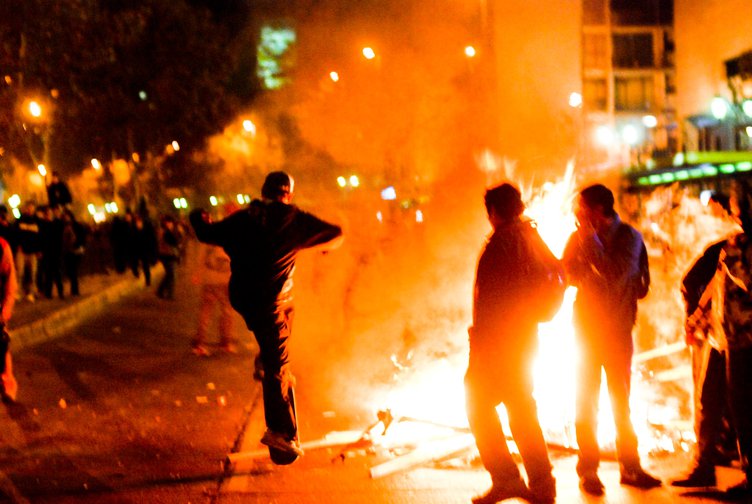Rioters set France ablaze
Paris, France:
The issue on which the French movement centered at first was the increase in fuel taxes, particularly on diesel fuel. The “yellow vest” was an accessible symbol for the protests, as all French drivers have been required to have one in their vehicles since 2008.
Recently a French citizen Nahel Merzouk of Algerian and Moroccan descent, was fatally shot by police after being stopped for a traffic violation in Nanterre, a western suburb of Paris. While initially, the police justified the shooting, citing safety concerns, conflicting accounts emerged. A Twitter video showed the officers pointing a gun at the stopped car, which then sped away before crashing.
After that, a peaceful “White March’’ protest took place in Nahel’s hometown of Nanterre, but tensions escalated as demonstrations spread to other cities. France witnessed violence across the country despite authorities detaining the police officer on charges of voluntary homicide.
The violence was primarily attributed to young individuals, including minors and migrants from Black and Arab communities. Nanterre served as the epicenter of the unrest, which then spread to north, central, and southwest regions. Throughout five consecutive nights, France witnessed widespread riots, resulting in over 3,000 arrests nationwide.
In response to the riots, mayors of affected cities organized rallies at town halls to condemn the violence, looting, and destruction of infrastructure.
France has experienced multiple uprisings in its banlieues (suburbs), primarily during the 1980s and 1990s. These unrests frequently originated from societal challenges such as unemployment, poverty, discrimination, and strained relations between minority communities and law enforcement. Although Nahel’s killing prompted a relatively swift response, concerns remain as previous cases have seen minimal convictions.
Last year, 13 individuals who failed to comply with traffic stops were fatally shot by the police, most of them Black or Arab. This year again, three have lost their lives. While evidence may not suggest racial motivation in the shooting, it has amplified concerns about racial inequality and police misconduct, leading to widespread protests and calls for justice.
The shooting has also reignited the debate over police’s use of deadly force, with left-wing lawmakers calling for the repeal or revision of a 2017 law that made it easier for officers to shoot at moving vehicles. The law was passed after lobbying from police unions following a series of terrorist attacks.
To quell the violence, the Minister of the Interior of France Gérald Darmanin deployed more than 40,000 law enforcement officers, resulting in injuries to both officers and protesters. Keeping in mind the young age of the rioters, President Emmanuel Macron called on parents to take responsibility and keep their children indoors. He also suggested imposing restrictions on social media usage, leading to increased scrutiny of social media companies accused of exacerbating the unrest.
However, police unions have voiced their support for the arrested officer, claiming he was performing his duty. French police unions have consistently contended that their work has become more perilous due to the government’s neglect in tackling underlying social issues, such as the prevalence of illicit drugs and the absence of employment and educational opportunities in disadvantaged regions. A crowdfunding initiative for the accused officer’s family raised nearly 1.6 million euros which was four times more than Nahel’s funding.
President Macron faces challenges on multiple fronts, including protests over pension reforms, domestic discontent over inflation, and the ongoing riots. He is attempting to convey a message of appeasement, although its effectiveness remains uncertain. Far-right figures and opposition parties have called for a state of emergency. And in the banlieues, tensions persist due to a perception that the country’s meritocracy is failing.
The riots on the mainland sparked further violence in French overseas territories, particularly in French Guiana. One government worker was killed by a stray bullet and police officers faced gunfire. Protests also erupted in Martinique, Guadeloupe, and Reunion. This highlights the divide between France’s overseas territories and its mainland, where the latter is marked by socio-economic challenges and allegations of neglect and oppression by the government.
I feel that despite positive economic indicators such as a low unemployment rate and increased foreign investment, France remains deeply divided within. This incident has brought to the fore the extent of racial polarisation in France. Recent studies have highlighted the disproportionate targeting of individuals perceived as Black or Arab by police during identity checks. For me, the reckless and almost targeted shootings symbolize systemic racism within French law enforcement agencies. I also feel that the law’s ambiguous wordings allow multiple and questionable interpretations.
Article written by and Editorial credit: State Bureau Chief Himanshu Nauriyal.
